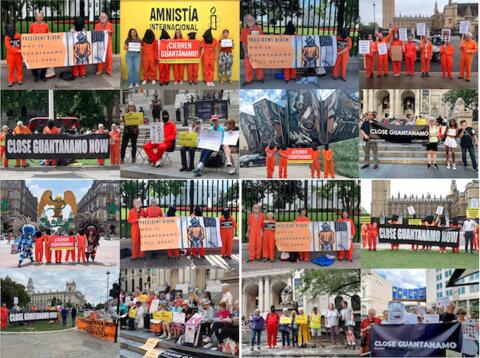By Andy Worthington, Read the original post on closeguantanamo.org
For the last 19 months, dedicated campaigners across the U.S. and around the world have been taking part, on the first Wednesday of every month, in coordinated vigils calling for the closure of the prison at Guantánamo Bay, the last dispiritingly unacceptable bastion of the Bush administration’s global “war on terror,” launched after the terrorist attacks on September 11, 2001, whose 23rd anniversary took place last week, to little fanfare.
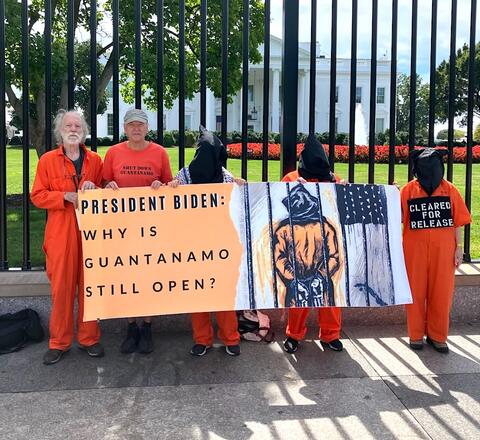
Organizations involved include Amnesty International, Witness Against Torture, the World Can’t Wait, NRCAT (the National Religious Campaign Against Torture), and the U.K. Guantánamo Network, with vigils taking place in Washington, D.C., London, New York City, Mexico City, San Francisco, Brussels, Cobleskill, NY, Detroit, Minneapolis and Los Angeles, with Portland, Oregon joining this month.
This article celebrates the vigils, and includes some of the most memorable photos from the colorful, enthusiastic and indignant events that have taken place over this 19-month period, as inspiration, hopefully, for a last push to highlight the need for the Biden administration to take decisive action to free as many as possible of the men still held before the Presidential Election in November, and before Biden’s time in office comes to an end in January. For all the photos and reports, please see the archive on my website here, here and here.
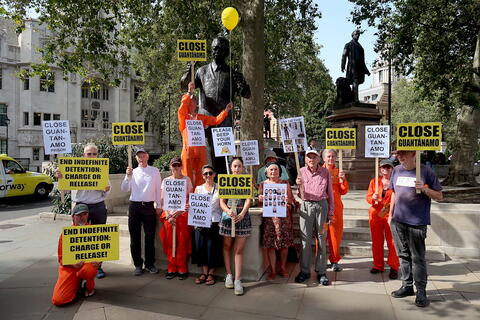
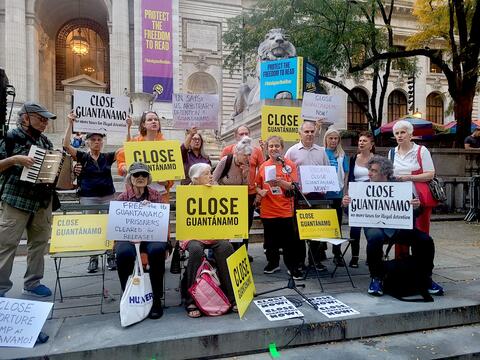
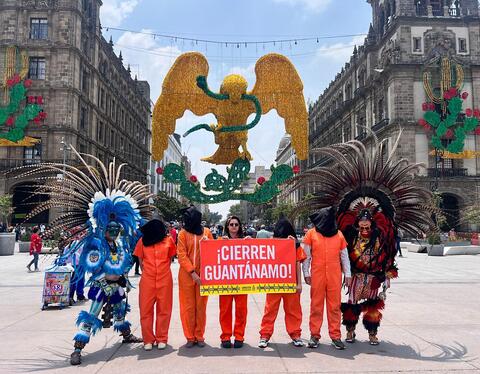
As is generally the case with Guantánamo — which is largely forgotten, despite 30 men still being held, and despite it being a monstrous human rights violation of global significance — the vigils are completely ignored by the mainstream media, and are generally small or even solitary affairs.
However, they remain significant as a regular reminder — even to an uncaring, amnesiac world — that some principled people still exist who are unwilling to accept what is still being done in their name at Guantánamo, where 19 of the 30 men held continue to be indefinitely imprisoned without charge or trial (even though most of them have been unanimously approved for release by high-level U.S. government review processes), while the other eleven are subjected to a fundamentally broken and dysfunctional military trial system — the military commissions — that is almost entirely incapable of delivering anything resembling justice.
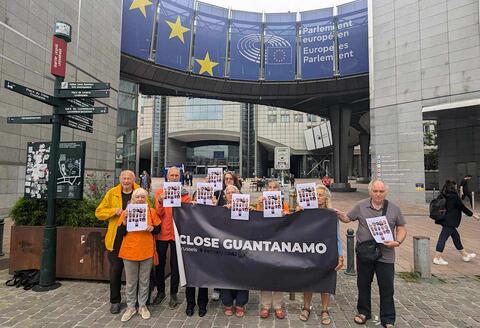
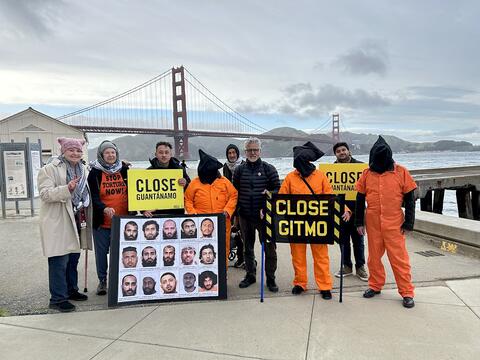
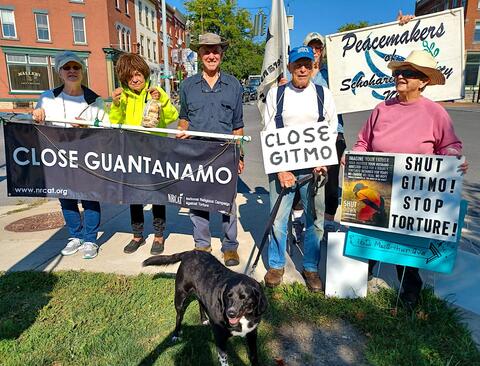
I initiated the vigils in February last year, largely in an effort to shine light on the grave and ongoing injustices of Guantánamo on a more regular basis than the annual vigils for the prison’s closure, which, for many years, have taken place on January 11, the anniversary of the prison’s opening.
At the time, the Biden administration was making noticeable progress towards Guantánamo’s closure, having recognized that, at the very least, it needed to stop holding men indefinitely without charge or trial, and to free those who had never been charged. As a result, 19 men were approved for release by Periodic Review Boards between May 2021 and September 2022, and ten of the men inherited from Donald Trump (including some of the men approved for release by the PRBs) were released between July 2021 and April 2023.
Since then, however, progress towards the prison’s closure has ground to a halt. 16 men approved for release are still held, and every month campaigners mark this unacceptable situation via two posters I made — a “Free the Guantánamo 16” poster showing the 16 men, and a poster that I update every month showing how long they have been held since the decisions were taken to release them. For the latest vigils, on September 4, this poster showed that they had, unacceptably, been waiting for the return of their freedom for between 712 and 1,406 days (from two to four years), and in three outlying cases for 5,339 days (nearly 15 years).
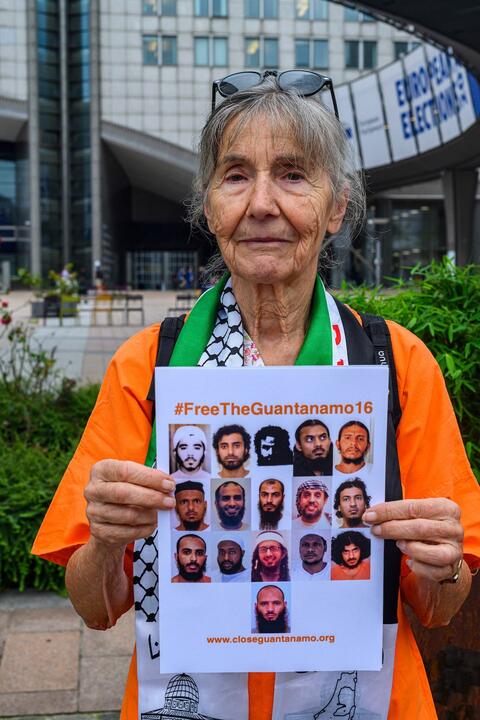
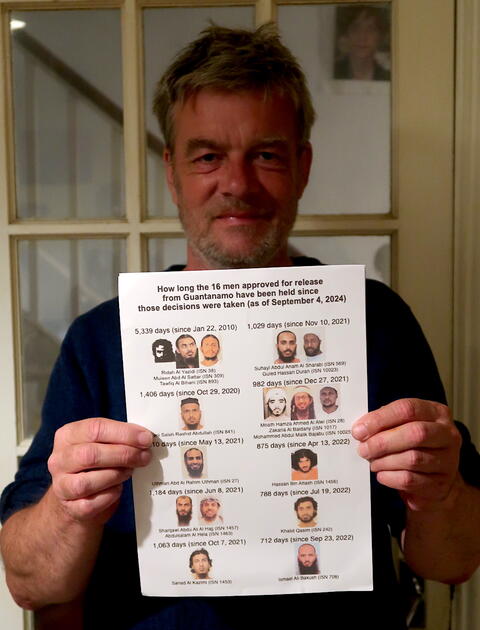
These men are still held because, firstly, the decisions taken to approve them for release were purely administrative, meaning that no legal mechanism exists to compel the government to free them, and, secondly, because third countries must be found that will offer them new homes, as they are from countries that Republicans in Congress have deemed to be unsafe for repatriations, and have, for many years, included provisions in the annual National Defense Authorization Act preventing their return.
Although the Biden administration finally dealt with this difficult situation in the summer of 2021 by appointing an official in the State Department to deal with resettlement issues — Tina Kaidanow, a former ambassador — her hands have been tied in the last year. Despite securing a new home in Oman for the majority of these men, it was revealed in May that, following the October 7 attacks in Israel, when a plane was already on the runway at Guantánamo, the resettlements were called off because of the administration’s fears regarding the “political optics” of their planned release.
Three other men are still, shamefully, held as “forever prisoners” without charge or trial, and while those responsible for the military commissions have secured plea deals in the cases of three of the men charged with crimes, efforts to resolve the cases of seven others continue to be plagued by a refusal, at the highest levels of the government, to recognize that the use of prolonged torture on these men, during years of imprisonment in CIA “black sites,” has made successful prosecutions impossible.
For the last two years, prosecutors and the defense teams for four of these men — accused of involvement in the 9/11 attacks — have been working to secure plea deals instead, but when the official responsible for the commissions, the Convening Authority, approved these plea deals last month, the defense secretary, Lloyd Austin, pulled rank, withdrawing the plea deals not for any practical reason, but because of fears of a Republican backlash, and, as I see it, because everyone at the highest levels of the Biden administration would rather maintain the illusion that a successful prosecution is possible — and the only “just” outcome — despite all the evidence to the contrary demonstrating that the use of torture has made that conclusion impossible.
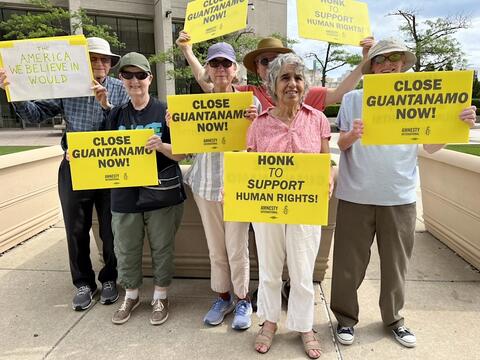
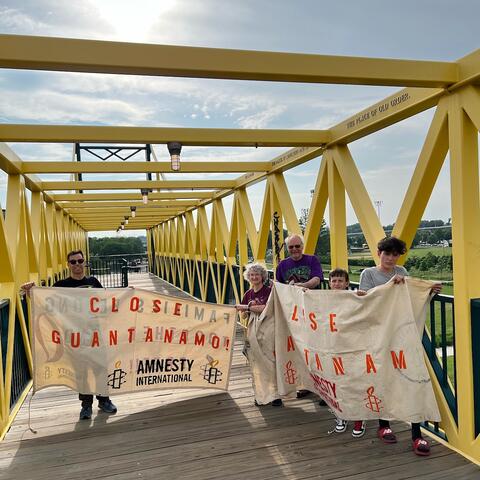
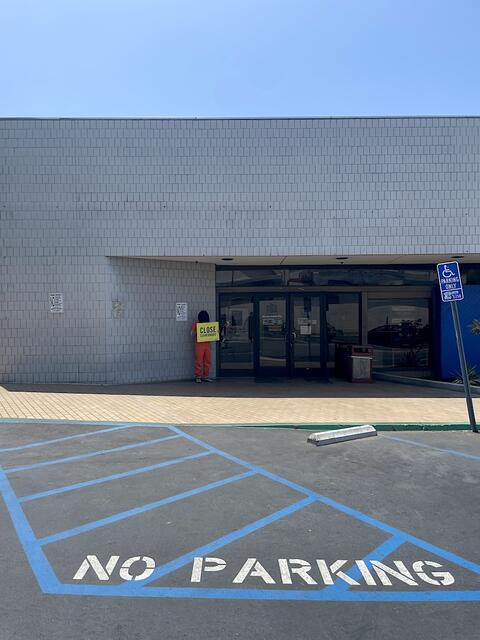
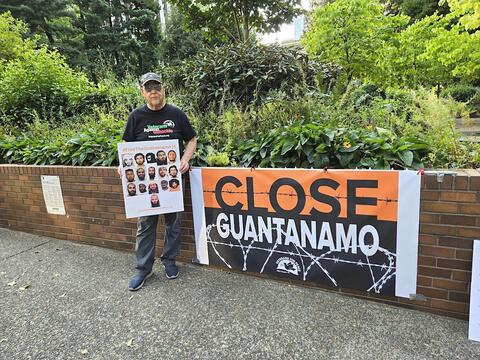
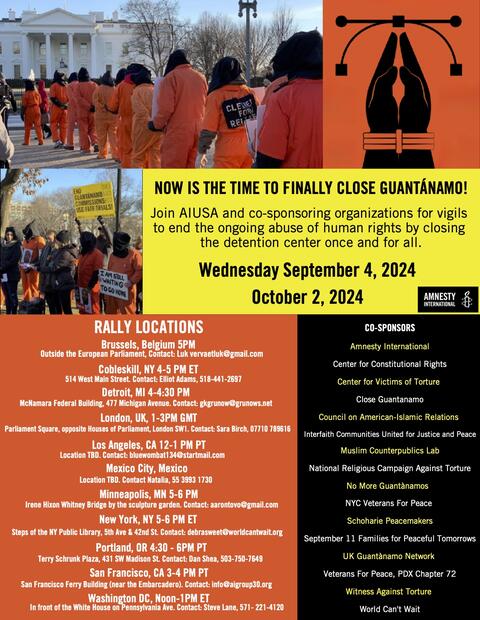
With everything at Guantánamo in limbo, and with just seven weeks to go until the Presidential Election, I hope that the determination of those holding monthly vigils for Guantánamo’s closure will inspire you to take part — to either join an existing vigil, or to set up your own if there isn’t one in your neighborhood.
The next vigils take place on Wednesday October 2 and November 6, and, the day before, we will be marking 8,300 days of the prison’s existence via our ongoing photo campaign, which involves supporters taking a photo with the posters that we make available marking every 100 days of the prison’s existence, and which we established in January 2018, when Guantánamo had been open for 5,845 days.
The poster marking 8,300 days, and calling on President Biden to close the prison, is available here on our Gitmo Clock website, which counts in real time how long Guantánamo has been open, and, for further inspiration, please check out the enthusiastic global response to our posters since last December, when we marked 8,000 days, and on January 11 this year, and in March and June, marking 8,100 and 8,200 days.

